Chromatin Immunoprecipitation (ChIP) Assay
What is a ChIP Assay?
Chromatin immunoprecipitation (ChIP) assays are used to evaluate transcription factor-DNA interactions and are critical for advancing gene expression regulation and epigenetic modifications studies. ChIP can detect and relatively quantify specific protein-DNA and protein-protein interactions in vivo at a single locus or multiple loci. ChIP involves chemically cross-linking proteins to DNA sequences, which is followed by immunoprecipitation of the cross-linked complexes (figure 1), and analysis of the resultant DNA by endpoint or quantitative polymerase chain reaction (qPCR) (figures 2-4), microarrays (ChIP-chip), or next-generation sequencing (ChIP-seq) (figures 5 and 6).
Chromatin immunoprecipitation (ChIP) assay workflow
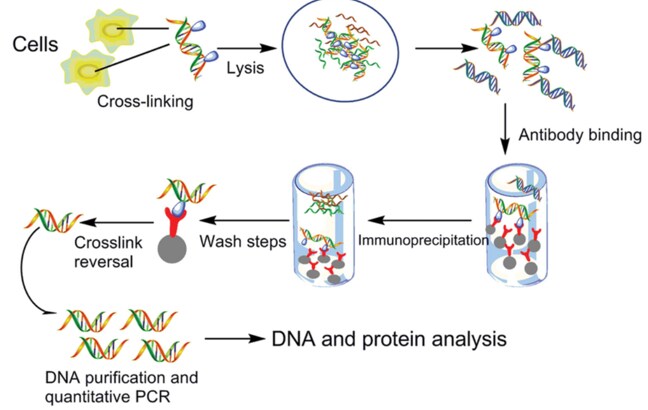
Figure 1.ChIP procedure workflow
Song et al., 2015
Protein and associated chromatin in living cells or tissues are cross-linked using formaldehyde. The cross-linked DNA–protein complexes (chromatin-protein) are then sheared into ∼500 bp DNA fragments using either enzymatic digestion or physical shearing by sonication. The DNA-protein complexes are then immunoprecipitated by an appropriate protein-specific antibody. After the cross-links are reversed, the associated DNA fragments are eluted, which is followed by immunoprecipitation of the cross-linked complexes and analysis of the resultant DNA by endpoint or quantitative polymerase chain reaction (qPCR), microarrays (ChIP-chip), or next-generation sequencing (ChIP-seq).
ChIP assays can be used for the following studies:
- DNA sequences occupied by multiple specific protein targets
- Binding sites and distribution of a particular protein, such as a transcription factors, transcription co-factors, DNA replication factors and DNA repair proteins throughout the entire genome, under specified cellular conditions
- Gene transcription and polymerase activity
- Complex DNA/protein interactions underlying disease phenotypes
- Modifications to proteins, such as histones, that may influence chromatin structure and gene expression
- Nucleosome architecture and regulation of chromosomal maintenance
ChIP enrichment of DNA sequences from cells
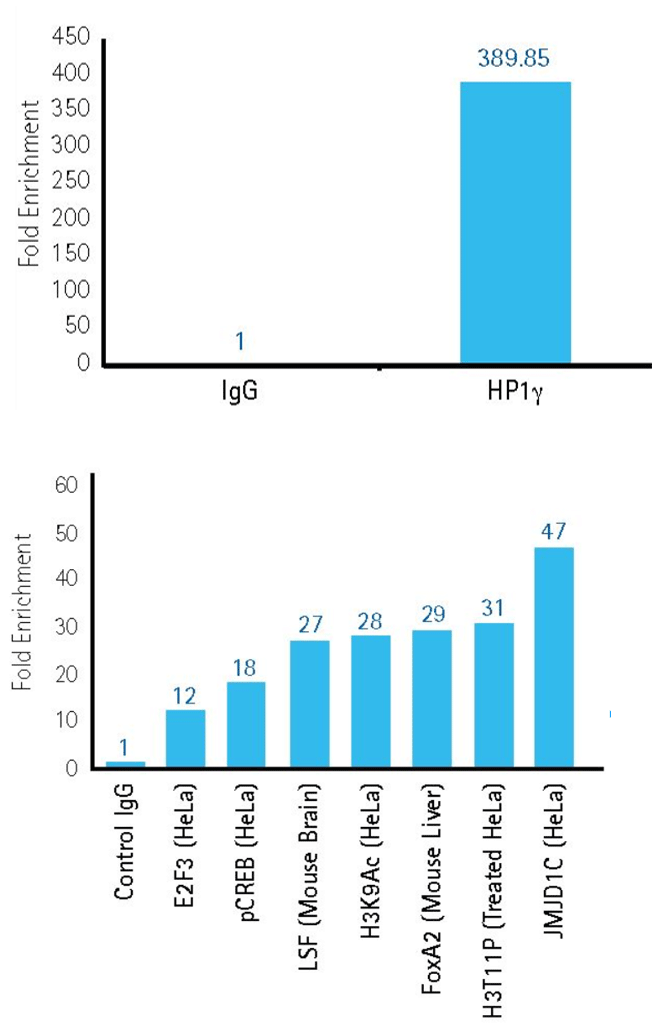
Figure 2.ChIP with cell line samples.
Upper panel: Successful ChIP enrichment of DNA sequences associated with the heterochromatin protein 1d gamma (HP1gamma), an important marker of gene repression. Data collected using ChIPAb+™ Hp1gamma antibody/primer set, mouse IgG (non-specific control) and Magna ChIP™ G kit (Product No. 17-10085).
Lower panel: High-throughput (96-well plate) ChIP analysis of multiple protein targets to query gene loci under various conditions using antibody panels and Magna ChIP™ HT96 Kit (Product No. 17-10077).
Effective ChIP assays with tissue samples
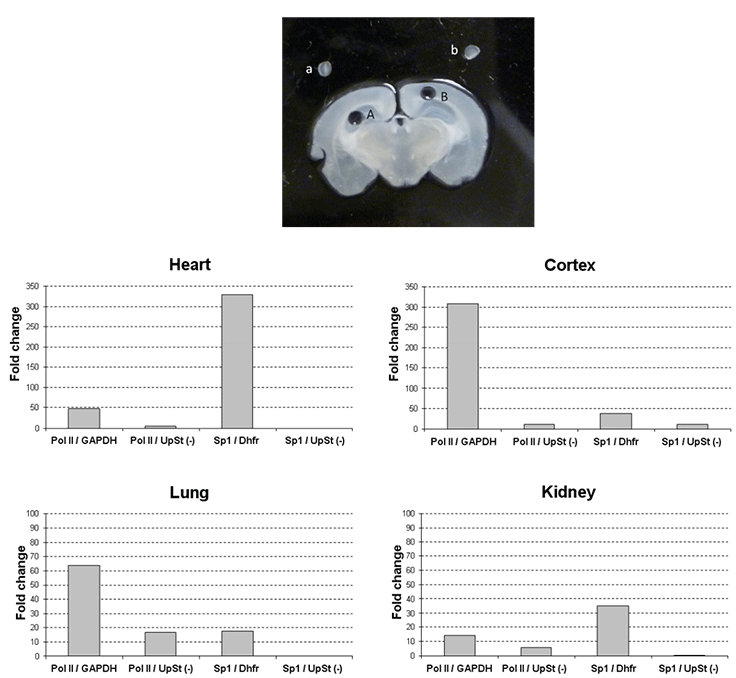
Figure 3.ChIP with tissue samples.
Upper panel: Cryosection tissue and isolate region specific tissue sample with provided 1 mm microdissection punch. An example of region-specific tissue isolation is shown in the image. A 300 µm of coronal mouse brain section with region-specific microdissection of the hippocampus (A) and cerebral cortex (B). The isolated tissue was placed above the dissected region (a: hippocampus, b: cortex). The purified tissue is then dispersed with Tissue Stabilizing Solution followed by formaldehyde treatment. Formaldehyde cross-links proteins to DNA to ensure co-precipitation.
Lower panel: Chromatin from various cell lines was subjected to immunoprecipitation with the indicated antibodies using the Magna ChIP™ G Tissue kit (Product No. 17-20000). The IgG used for relative comparison was either Rabbit Purified IgG (Product No. PP64B) or Mouse Purified IgG (Product No. 12- 371B), depending upon the ChIP antibody. Quantitative PCR data is presented as fold relative enrichment to IgG from independent experiments or as % input. For a biological negative control, qPCR was assessed with primers upstream of the Dhfr gene (UpSt (-)). The antibodies and primers used were as follows: Anti-RNA Polymerase II clone CTD4H8 (Product No. 05-623B): 1 µg of mouse monoclonal affinity-purified antibody immunoprecipitated with chromatin of various mouse tissue and qPCR assayed with primers specific for mouse GAPDH promoter and Anti-SP1 (Product No. 07-645): 1 µg of mouse monoclonal affinity-purified antibody immunoprecipitated from chromatin of various mouse tissue and qPCR assayed with primers specific for the mouse Dhfr promoter.
Higher fold enrichment using low amounts of chromatin or shorter ChIP assay procedure time
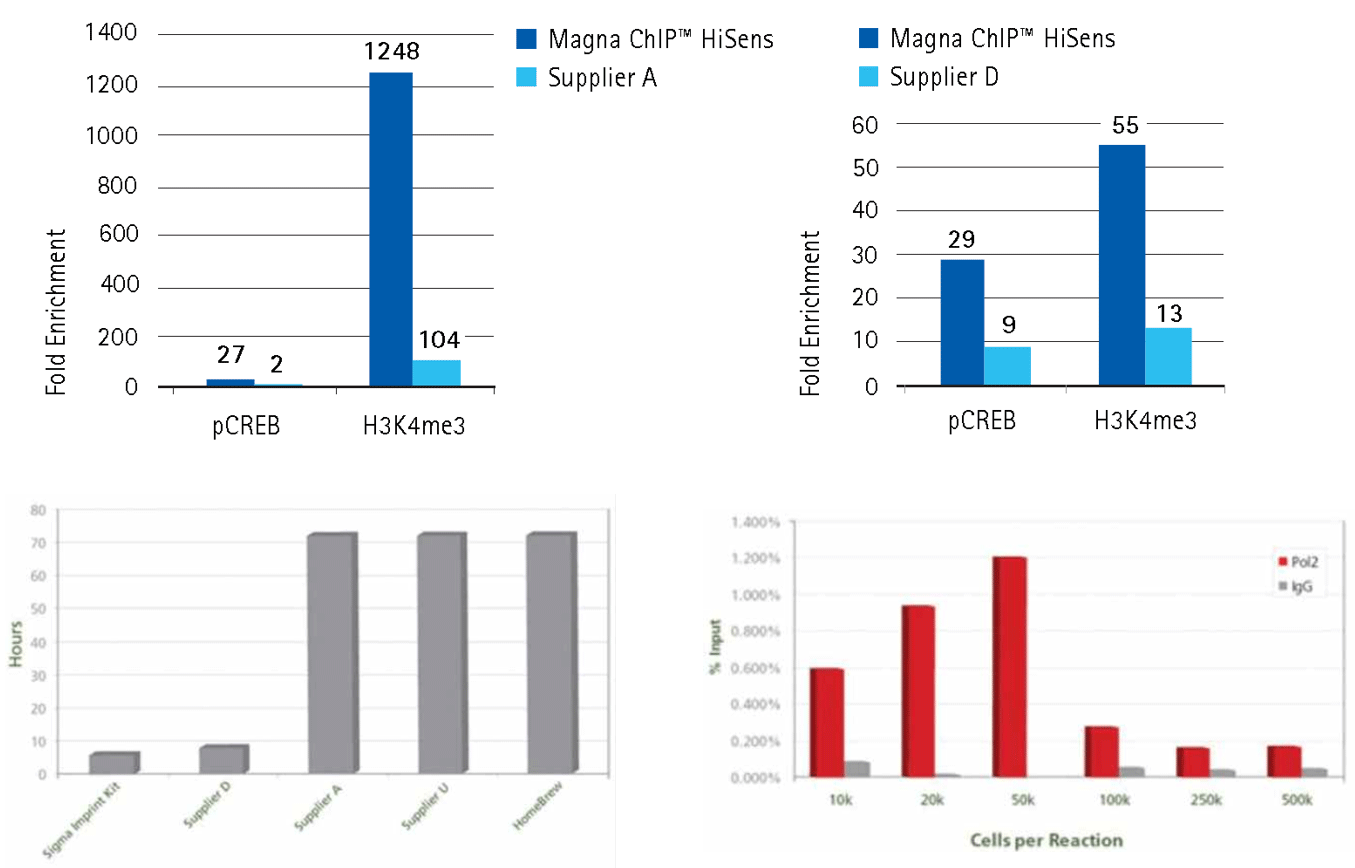
Figure 4.Our kits produce higher fold enrichment using low amounts of chromatin or shorter procedure than other supplier's kits.
Upper panel: 10,000 cell equivalents of sonicated chromatin prepared from HeLa cells were chromatin immunoprecipitated using 1 µg of purified IgG (Rabbit IgG, Product No. 12-370) or specific antibodies (H3K4Me3, Product No. 17-614; Phospho-CREB, Product No. 17-10131). Each assay used either the reagents and protocol provided with the Magna ChIP™ HiSens Kit (Product No. 17-10460) or those from the low-input ChIP kit from Supplier A or Supplier D. Immunoprecipitation of antibody-associated DNA fragments was verified by qPCR using positive control primers (GAPDH promoter primers for H3K4me3 and c-Fos promoter primers for pCREB) and negative control primers (human ß-globin promoter primers). Results reflect analysis of 2 µL out of 50 µL total DNA per qPCR reaction.
Lower panel: Complete ChIP reaction in 6 hours in flexible strip well format for Imprint® Chromatin Immunoprecipitation Kit (Product No. ChIP1) Comparison of time required for protocol completion from fixation through purification using different Chromatin Immunoprecipitation kits. Each ChIP experiment was performed using each manufacturers recommended protocol and total required times were compared. HeLa cells were counted, fixed, and immunoprecipitated according to the Imprint CHP1 bulletin with optional High Sensitivity method. ChIP assays were performed using Anti-H3K9ac (H9286) and kit provided antibodies against human RNA polymerase II and non-specific mouse IgG. To evaluate ChIP enrichment, SYBR qPCR was conducted targeting the GAPDH promoter region (highly expressed housekeeping gene). Percent Input describes the amount of DNA with and without antibody selection. For these antibodies, apparent enrichment increased with fewer cells per reaction from diminished non-specific pull-down.
ChIP DNAs analyzed by next-generation sequencing (ChIP-seq)
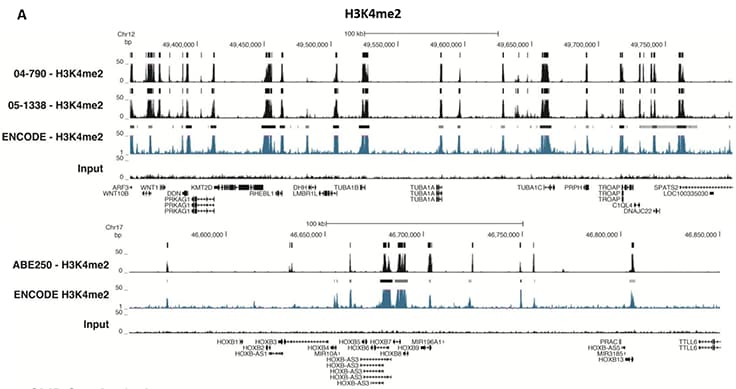
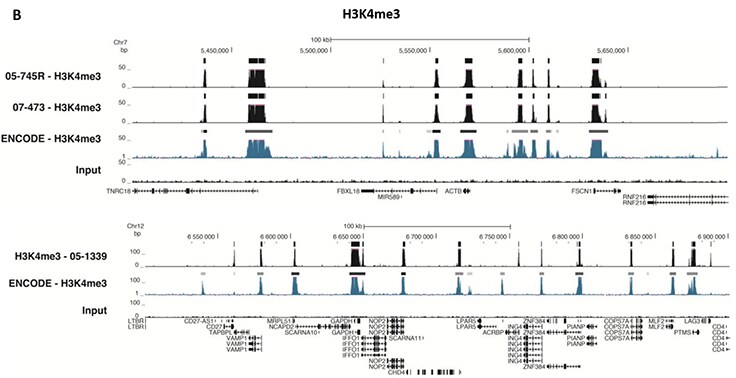

Figure 5.ChIP-Seq Analysis
To continue reading please sign in or create an account.
Don't Have An Account?